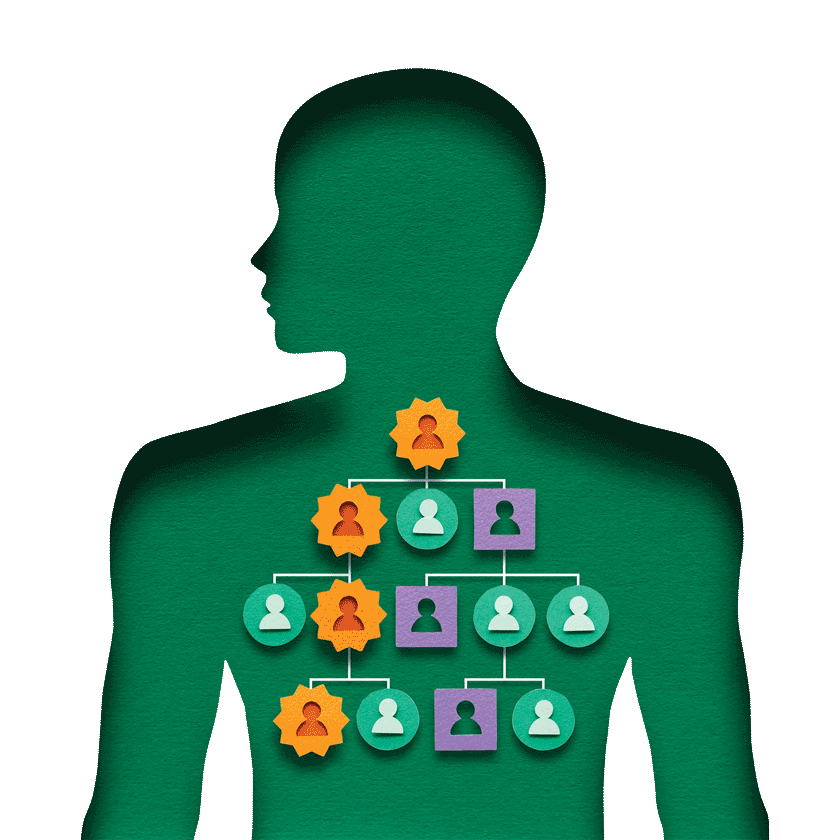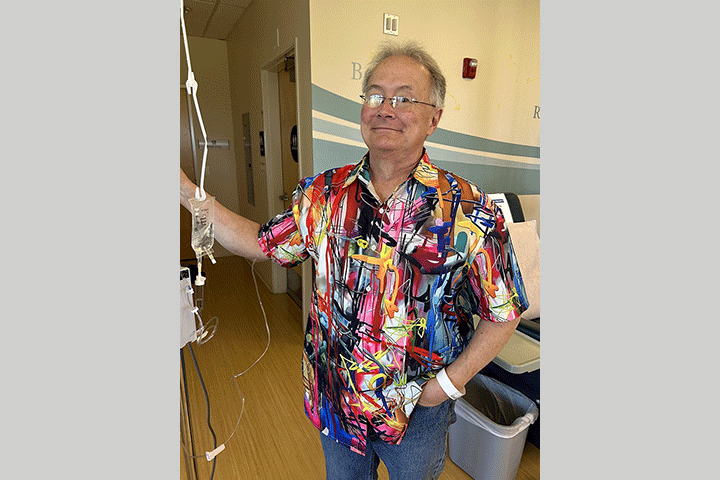Family History Matters

- Two of my siblings get pancreatic cancer
- Regular screening recommended for me
- Intraductal papillary mucinous neoplasm found
- Distal pancreatectomy
My story starts with my siblings.
In 2010 my sister (age 64) was diagnosed with and died from pancreatic cancer. In 2012 my brother (age 80) was diagnosed with the same cancer; he died in 2013. Both survived less than two years.
Because my siblings both had pancreatic cancer, my brother-in-law, Dr. Steven Gruenstein, an oncologist at New York Cancer & Blood Specialists (New York City), thought that there could be a hereditary or genetic disposition in my family for this cancer.
He referred me to two doctors both at Mount Sinai Hospital (New York City): Dr. Aimee Lucas, a gastroenterologist with particular interest in caring for patients at high risk for pancreatic cancer, and Dr. Christopher DiMaio, a gastroenterologist who specializes in advanced GI diagnostic and therapeutic procedures. (Dr. DiMaio is now at St. Francis Hospital & Heart Center in Roslyn, New York.) Seeing these doctors saved my life.
Surgery Makes a Difference
My first appointment was in January of 2012. I had no symptoms. Throughout 2012, I was followed with frequent MRIs and endoscopic procedures. At age 74, in February 2013, suspicious cancerous tissue was found near my pancreas.
On July 29, 2013, Dr. Daniel Labow performed a distal pancreatectomy and splenectomy at Mount Sinai. During surgery Dr. Labow found a 3.0 cm intraductal papillary mucinous neoplasm (IPMN), a precancerous condition. The tail of the pancreas was removed, as it sits next to the spleen. My spleen was removed to avoid infection and to prevent cancer cells or tumors from spreading to my spleen.
Because my spleen was removed, I received prophylactic vaccines to prevent certain infections. These vaccines were given to me again in 2018 and will be given to me again in 2023. I also became a type 1 diabetic, because the tail of the pancreas is responsible for releasing insulin to control blood sugar. I have a Medtronic insulin pump, which has allowed me to continue to travel and live an active life. All of this is a small price to pay for my life.
Life After Pancreatic Cancer
Now, all of my immediate family and my siblings’ families are being followed with MRIs. Through 2019 I was monitored with MRIs and endoscopic exams. Now I receive an MRI once a year. My family and I are taking part in a research project with Dr. Lucas. I am an active fundraiser and participate in many Lustgarten Foundation walks to raise money for research.
A sad turn in my story occurred when Louise, my wife of 57 years, was diagnosed with pancreatic cancer in early 2017 at the young age of 75. She had the Whipple procedure and subsequently was treated with chemotherapy. She survived for two years under the excellent care of Dr. Gruenstein. During those two years we were able to take a family trip to Israel in the summer of 2018 and a family cruise to the Bahamas in December 2018. Both were wonderful trips with many wonderful memories. She passed away in March of 2019.
During 2022 I have been to Israel two times and am going again in December. My son and I are going to Iceland in November. I also take courses at Kingsborough Community College in Brooklyn for fun. I have been doing this since 2008. During the summer I spend time at a beach club, swim, and play backgammon.
I want everyone reading this to understand that in my opinion the only way to help beat pancreatic cancer is to have screening MRIs at age 50 and follow-ups after. We have to get insurance companies to allow this. I hope new blood tests will someday be able to diagnose pancreatic cancer.
Watch Martin tell his story in “Early Detection Saved My Life.”






